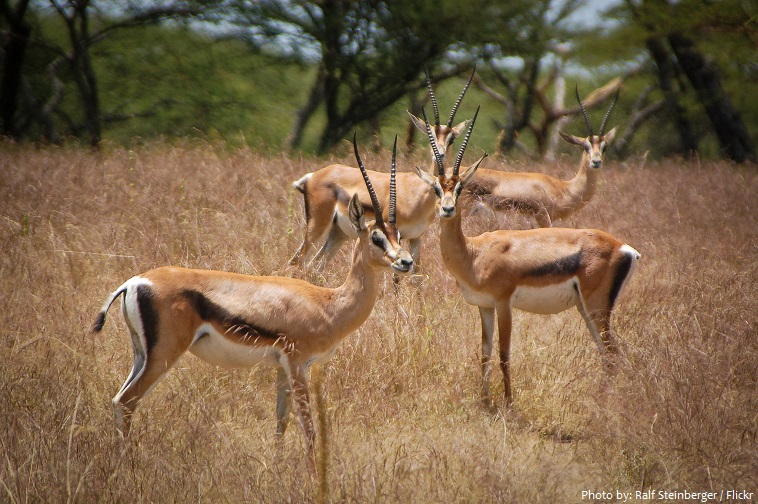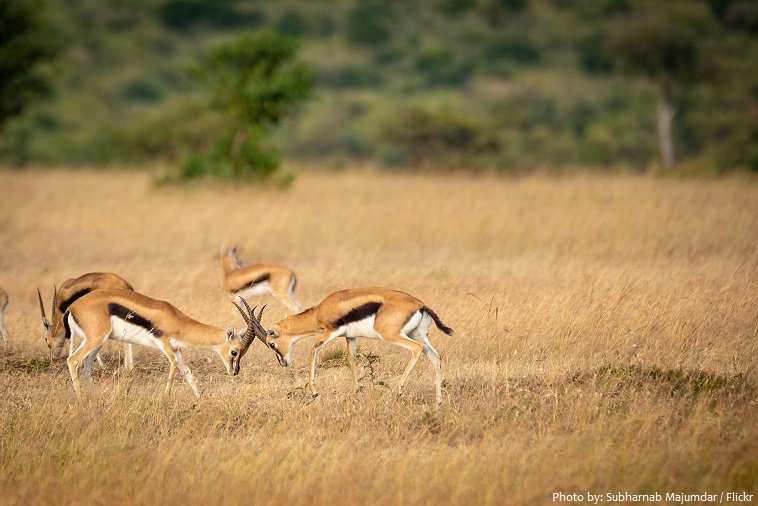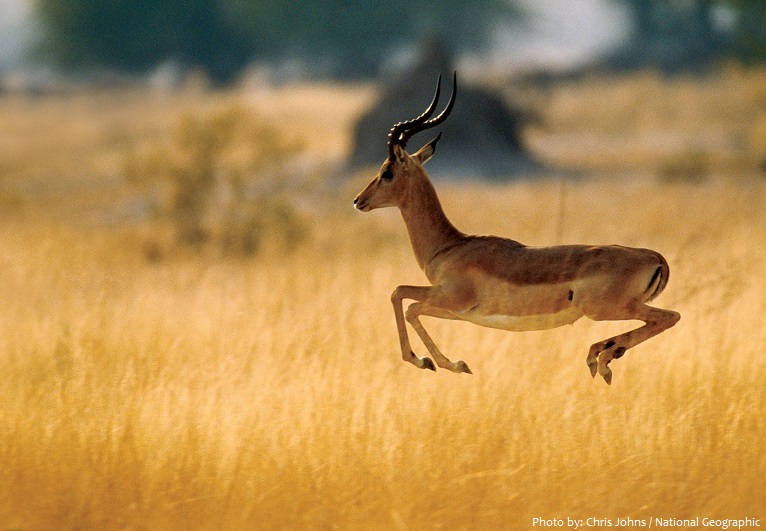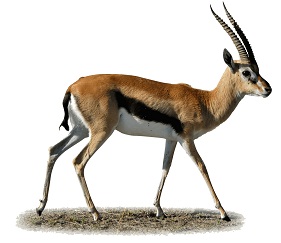The gazelle is a species of mammal that is a member of the antelope family of animals.
There are 19 species of gazelles in the world.
Gazelles are found mostly in the deserts, grasslands, and savannas of Africa, but they are also found in southwest and central Asia and the Indian subcontinent.
They live up to 12 years in the wild and up to 15 years in captivity.
Gazelles are relatively small antelopes, most standing from 60 to 110 cm (2 to 3.5 ft) high at the shoulder.
Most gazelles are tan-colored, with white underparts and rump patch, a dark side stripe, and contrasting facial markings.
The males have long, often curved, horns. Amongst all species of gazelles, the Edmi gazelle horns grow the longest and can reach 35.5 cm (14 in) long.
Gazelles are very social animals. They live in herds from few up to 700 animals.
They have a strong sense of hearing, sight, and smell which they use to make up for their vulnerability in their wild habitats.
Gazelles are herbivores who only feed on vegetation. They feed on grass, shoots, and leaves. Whenever they want to reach leaves from high branches, gazelles have the ability to stand on their back legs.
They are mainly diurnal species. Gazelles seek shade and avoid activity in the hottest weather by feeding at night and early morning when plants contain the most moisture. If all else fails, they can cool down by rapid nasal panting.
Gazelles that can live in the desert can extract water from the plants they browse without having to drink.
Gazelles are very fast animals. Some are able to run at bursts as high as 100 km/h (60 mph) or run at a sustained speed of 50 km/h (30 mph).
Gazelles have developed an unusual means of avoiding predation called stotting. This is a stereotypical stiff-limbed movement where the gazelle appears to bounce around. A number of theories surround the purpose of this behavior, it likely functions as warning to other gazelles as well as a demonstration of physical superiority to predators.
The males are not usually territorial at these times, but they leave the herd during the breeding season and stake out a territory where they compete for females.
After mating the gestation period is about 6 months. Female gazelle give birth to a single calf or, more rarely, twins.
Gazelles are extremely important prey animals, and are preyed upon by all major predators in an ecosystem, including lions, cheetahs, leopards, crocodiles, jackals, African wild dogs, hyenas .
The most popular species of the gazelle is the Thomson’s gazelle which is mainly found in African savannas.
Most gazelle species are considered threatened to varying degrees.
The Queen of Sheba’s gazelle became extinct when it was hunted for food in 1951 by soldiers.
The name “gazelle” comes from the Arabic “gazal,” the term for love poems. To Europe it first came to Old Spanish and Old French, and then around 1600 the word entered the English language.
Appreciated for its grace, it is a symbol most commonly associated in Persian and Arabic literature with female beauty.





